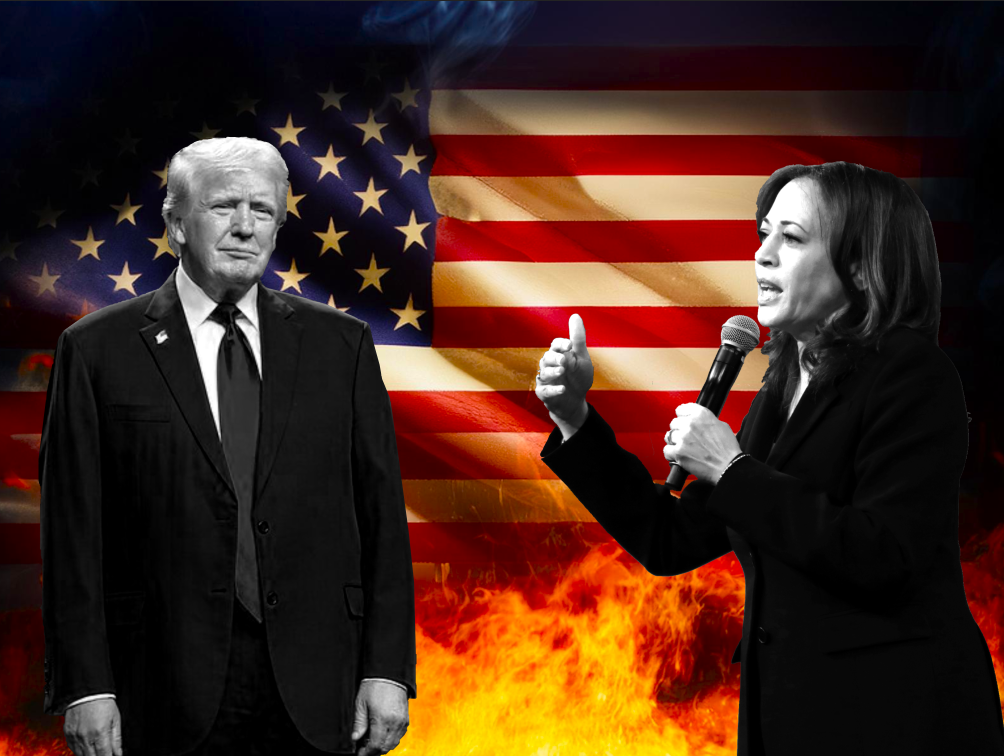The 2024 election is unlike any other in history. The neck-and-neck race between a district attorney and a convicted felon has been characterized by criminal trials, multiple assassination attempts, and Biden’s historic decision to step down. Beyond all of these factors, the economic stakes are higher than ever. In a time when America is coming down from record-high inflation and fears of recession run rampant, the future president will be handed a disaster-bound economy that desperately needs good leadership and intelligent policies to grow. Unfortunately, competent planning seems to be lacking in this race, with both Kamala Harris and Donald Trump’s policies being heavily criticized as too radical and ultimately harmful. Here is how both candidates’ economic plans will damage the American economy:
KAMALA HARRIS: The Democratic candidate’s proposals align with most progressive politicians: free money for potential voters at the expense of the rich. While they sound good in theory, they risk stoking the flames of inflation and alienating the people who contribute most to our economy. Take her proposed $25,000 homebuyer credit, a proposal where first-time homebuyers get a free $25,000 from the government to help purchase their house. Could this be the solution to housing affordability for working class people?
As it turns out, no. A similar program was tried in Australia, where the federal government gave every first time homebuyer assistance up to 18% of the price of the home. According to a study by the Australian Deakin University, this program did not help reduce the cost of purchase for homebuyers, but instead increased them by 18.8%. Harris’s proposal would likely do the exact same thing: raise home prices by tens of thousands of dollars in a housing market that is already unaffordable for most young Americans.
All of Harris’s other economic ideas follow a similar pattern: they are marketed as if they help the middle class and are paid for by the rich, but they instead hurt everybody in their wake. A perfect example of this is her restructuring of the capital gains tax. In our current system, the capital gains tax is collected from gains made from holding assets like stocks or property at a top rate of 20%. The tax is paid on the profit that you make after selling assets, which means that you won’t get penalized for holding stocks or property over many years.
Harris proposes adding on to the current capital gains tax with a 28% unrealized capital gains tax on those with a net worth over $100 million. This would require the wealthy to sell massive amounts of stocks and assets each year to pay the tax, which would depreciate values and harm growth. Since many in the middle class heavily rely on investments for retirement, this tax on the super wealthy would also harm the average American.
Harris also proposes to raise taxes on the highest income bracket, raise the corporate tax rate by 7%, and establish price controls for food, all highly controversial proposals that would likely harm economic progress. The Wharton School of Business estimates that while very poor Americans would be better off under a Kamala Harris presidency, the GDP of the USA would actually fall by 4% over the next 30 years.
DONALD TRUMP: The Republican candidate’s economic views align closely with his billionaire donors: lower taxes for corporations and the wealthiest Americans at the expense of everyone else. Trump has officially proposed cutting the corporate tax rate from 21% to 15%, which could help stimulate economic growth and wages similarly to Trump’s last corporate tax cut in 2017. However, this would also massively decrease the revenue of the federal government, which Trump addresses in another infamous economic proposal: tariffs.
Tariffs, taxes on imported goods, are central to Trump’s economic plan. He proposes a 10-20% tariff on all foreign-made products and a 60% tariff on goods from China. Since 40% of American imports come from China, such a huge tax would be a shock for the US economy. Every brand that makes their products in China, such as Apple, Nike, Adidas, and Converse, would have the prices of their products raised by 60%. The 10-20% import tax on other countries is smaller, but it’s just as much of a shock: imagine going to a car dealership and seeing the price of nearly every car become higher by thousands of dollars. While these taxes would fund a corporate tax cut, the Peterson Institute for International Economics has estimated that it would increase costs for middle class families by $2,600 a year.
Surprisingly, Trump’s worst proposal for the economy is not a tax or budget change: it’s his treatment of immigrants. Trump has vowed to deport between 15 and 20 million illegal immigrants, which may prove difficult since most estimates put the actual number of illegal immigrants in the US at 11 million. He has also pledged to crack down on the flow of migrants over the border. Though Republicans may oppose immigration, studies show that immigrants account for 17% of US GDP and create more jobs than they take. Economists estimate that if Trump deported millions of immigrants, inflation would be an incredible 7.4% higher and the GDP would be 12% lower after 3 years.
In short, Trump’s policies would cause a shrinking economy, a hurting middle class, and inflation far worse than the 9.1% during COVID. Harris’s policies are also inflationary and economically destructive, and damage to the economy would occur if either candidate enacted their campaign promises. However, deranged proposals like a 60% China tariff and mass deportation of immigrants ultimately make Donald Trump a far worse choice for the United States.




